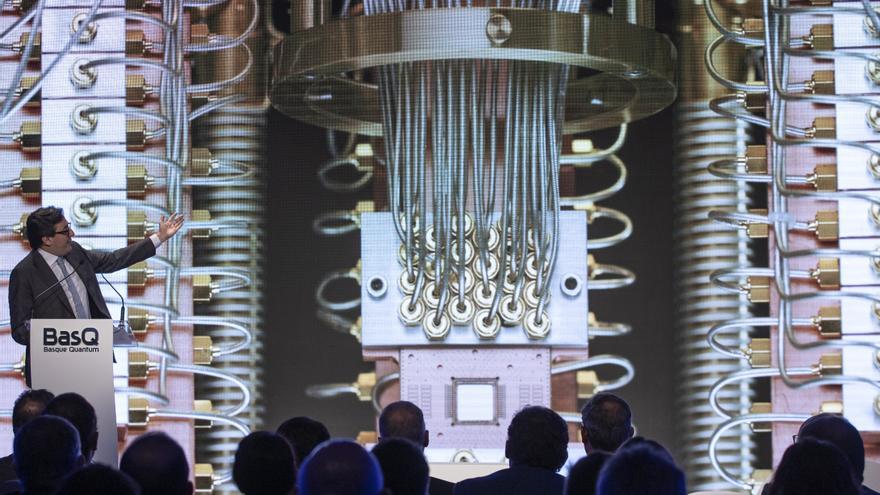ibm | Another step towards quantum computers: they achieve practical scientific applications


Where quantum computers are becoming more and more strong They need more isolation to avoid noise and mechanisms to correct errors. now, ibm She was able to advance in this direction and prove that one of her devices can help calculate practical scientific problems.
In their experiment, researchers from Thomas J Watson Center from IBM, after using “trickThat reduces noise and errors, from your computer Kyiv 127 qubits is capable of simulating extremely complex physical states with high accuracy. The results are published in the journal nature.
Although it has already been shown that quantum processors can outperform conventional processors in solving tasks – quantum supremacy -, so far they have done so with artificial problems, that is, tailor-made rather than with the utility of patents.
The scientific community is therefore debating whether current and future quantum computers – even with noise and errors – can be good enough to perform calculations that could be useful, for example, for research purposes.
a team Andrew Edens, Youngseok Kim and Abhinav Kadala demonstrated in this study that its quantum chip can reliably generate, process, and measure—the similarity of the obtained result to what it should be—quantum states are too complex for their properties to be reliably estimated using classical estimations, the journal summarizes.
The experiment suggests that quantum computers “may actually be able to help solve some specific problems — such as studying physical models — that are difficult to solve in classical computers, even without error correction.”
The task of quantum computers, like conventional computers and supercomputers, is to perform operations, which the former perform in a completely different way: Work at the atomic level Thus following the rules of quantum physics (the branch responsible for studying the world at very small spatial scales).
Quantum computers work with qubits (the basic unit of quantum information) and not with qubits (as in the case of classical units).
a a little (English abbreviation for binary number -binary digit-) is the minimum unit of information used in computing or in a digital device and is represented by two values, 0 and 1 – everything that supports the operation of a classic computer is written in these terms-
However, in quantum computing this changes, since a qubit, unlike a bit, can also contain certain combinations of both values that are not classically achievable, making it possible Higher processing speed.
Quantum systems are very sensitive to noise — changes in temperature and light — and this can disturb computation and lead to inaccurate results, a problem that worsens as the size of the structure gets larger.
Classical mechanisms are built with their own error-correction mechanisms, but in quantum errors it is still a challenge.
These mechanisms are known in theory, but they meant an exponential increase in the number of qubits and operations, such that only a push was made to bring them into a quantum computer where the error probabilities of each operation were still much lower than they are today. Explain. Carlos Sabin to divide Theoretical Physics from the Autonomous University of Madridwho did not sign the article.
The challenge of having a quantum computer with a large number of qubits and with extremely low error probabilities is still very far from current technological capabilities, sums up Science Media Center.
The question the IBM team asked was whether anything useful could be done with today’s quantum computers, with a small number of qubits and a relatively high probability of error.
To get around this issue, the team did not use a bug fix, but “mitigate impuritiesa technology that was proposed about five years ago as an alternative to the first, this researcher details EFE.
It is a kind of ‘trick’ by which debugging is done later normally with a conventional computer, once you know these and the sources they come from and the implications.
in these resultsDilutedIBM uses a machine 127 qubits – one of the largest published numbers – and implements quantum circuits with 2,880 logic gates (operations) between pairs of qubits.
Related news
With this, he was able to simulate a model I singwas originally introduced to explain properties related to magnetism which has found many applications in physics over time.
For Sabine, although the results are still in the experimental stage, they carry weight. “In the face of the concept of quantitative advantage or superiority that Google defends — with the controversy it contained when it asserted in 2019 that it had achieved it and IBM questioned it — IBM now wants to highlight quantitative advantage.”





